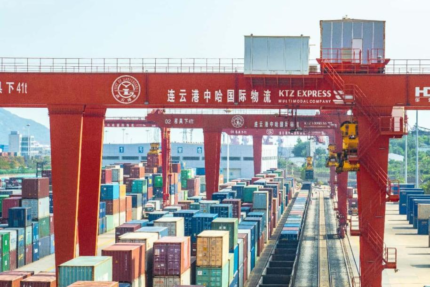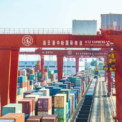
Big News
HighLights
Focus

Round the Events

by adnan
Lets make America great again
It is a long established fact that a reader will be distracted by the readable content of a page when looking at its layout. The point of using Lorem Ipsum is that it has a more-or-less normal distribution of letters It is a long established […]
Must watch
World in Pictures


Most commented on travel
Most recent on Culture
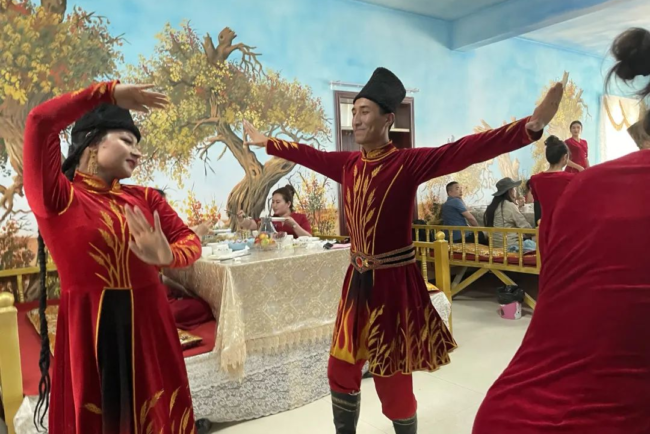
by News Desk
Desert transformation: county in Xinjiang finds prosperity in sands
By Jiang Yunlong, People’s Daily “As a child, my dream was to escape Makit and distance myself from the Taklimakan Desert,” recalled Reyhan Ehmet. Born in 2001 in Makit county, Kashgar prefecture in northwest China’s Xinjiang Uygur autonomous region, Reyhan remembers a childhood dominated by sandy landscapes. “Spring […]
Culture WorldSingle author's column
CLAS hosted a Seminar titled ‘Pakistan’s Strategic Deterrence: Assessing the Effectiveness of Military Posturing in Preventing Indian Aggression’
Islamabad July 01, 2025: Center for Law and Security (CLAS) hosted a seminar titled ‘Pakistan’s Strategic Deterrence: Assessing the Effectiveness of Military Posturing in Preventing Indian Aggression’ last day at TMUC Islamabad says a press release. The event featured a panel of distinguished experts who discussed the […]
WorldChengdu emerges as magnet for foreign businesses, professionals
By Wang Yongzhan, People’s Daily Chengdu, a key city in southwest China’s Sichuan province, has become a magnet for foreign businesses and investors, thanks to its rich cultural heritage, convenient location, and strong pro-business environment. Today, more than 4,000 foreign-invested enterprises are based in the […]
WorldChinese online literature offers global readers a window into modern China
By Zhang Bolan, Zhao Yipu, Mang Jiuchen, People’s Daily Once a niche form of entertainment, Chinese online literature, from serialized novels to adaptations in television, gaming, and animation, is emerging as a new cultural bridge to the world – drawing millions of international readers into its vivid […]
WorldChina-Central Asia cooperation grows deeper, more substantial
By Jia Pingfan, People’s Daily On April 29, 2025, construction officially commenced on three critical tunnels, Fergana Mountain, Naryn No.1, and Koshtet, along the Kyrgyz section of the China-Kyrgyzstan-Uzbekistan (CKU) Railway, marking a major milestone as the project advances into its mainline construction phase. Starting […]
WorldEiditor's choice
Latest
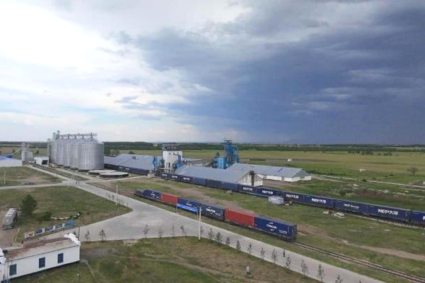
China, Central Asia accelerate economic cooperation
by News Desk
By Peng Xunwen, People’s Daily Economic ties between China and Central Asian countries are gaining momentum. From record-high trade figures to deepening investment partnerships, the two sides are forging a new chapter of cooperation along the ancient Silk Road. At the 2nd China-Central Asia Meeting of […]
WorldBy Peng Xunwen, People’s Daily
Economic ties between China and Central Asian countries are gaining momentum. From record-high trade figures to deepening investment partnerships, the two sides are forging a new chapter of cooperation along the ancient Silk Road.
At the 2nd China-Central Asia Meeting of the Ministers of Economy and Trade held recently in Astana, Kazakhstan, several key figures underscored the pace and scale of this partnership: in 2024, China’s trade with Central Asian countries reached a record high of $94.8 billion, and China has cumulatively invested more than $30 billion in Central Asian countries.
The numbers speak to a broader trend: a fast-expanding, mutually beneficial relationship rooted in shared economic potential. Today, the modern echoes of camel bells – symbols of the ancient Silk Road – resonate anew, reflecting the enduring spirit of connectivity and mutual benefit.
The vitality was on full display at the 9th Silk Road International Exposition held in Xi’an, northwest China’s Shaanxi province. Products such as camel milk powder from Kazakhstan, filled candies from Uzbekistan, and organic fruit juice from Kyrgyzstan captured the attention of Chinese consumers. The expo demonstrates the improvement of the China-Central Asia mechanism and their deepened economic and trade ties.
China has been the largest trading partner and a major source of investment for Central Asia. According to Xu Tao, deputy director of the Eurasian Social Development Research Institute at the Development Research Center of China’s State Council, trade and investment between China and Central Asian countries have surged more than 100 times in the past 30 years since the establishment of diplomatic ties.
Xu noted that the cooperation is built on sincerity and mutual trust, and grounded in principles of equality and mutual benefit. From early roles as distribution hubs and logistics centers to significant advances in bilateral trade, China and Central Asia have made steady progress across a range of sectors.
In the energy sector, cooperation with Chinese enterprises has enabled Central Asian countries to diversify their energy exports. The China-Central Asia Gas Pipeline, which has three lines in operation, has become a major overland route for China’s natural gas imports. Meanwhile, as global demand for clean energy grows, collaboration in renewable energy such as solar and wind power is gradually taking shape.
Agricultural cooperation is also deepening and yielding tangible results. Central Asia’s fertile soil and abundant sunlight produce high-quality melons, grains, meat, and cotton. The two sides enjoy complementary strengths: while their agricultural resources differ, their geographic proximity facilitates close collaboration. Chinese crop varieties, technologies, machinery, and agricultural supplies are flowing outward, while products from overseas agricultural parks are entering the Chinese market, a vivid illustration of China-Central Asia agricultural cooperation.
Major infrastructure projects have brought China and Central Asia even closer. The China-Central Asia Gas Pipeline, the China-Kazakhstan crude oil pipeline, the China-Kyrgyzstan-Uzbekistan highway, the China-Tajikistan expressway and the booming China-Europe freight train service – all running through Central Asia – have all contributed to a more robust logistics network and created win-win outcomes. Meanwhile, cooperation in railway construction, financing, and technical support, such as the China-Kyrgyzstan-Uzbekistan railway and the trans-Caspian international transport corridor, continues to advance.
According to Ma Bin, associate professor with the Center for Russian and Central Asian Studies at Fudan University, the rapid expansion of connectivity projects, such as the China-Europe and China-Central Asia freight trains, offers compelling evidence of how both sides are advancing practical, mutually beneficial cooperation based on their respective development needs.
These projects have significantly enhanced transportation efficiency and quality between China and Central Asia, facilitated trade, enabling Central Asian countries to overcome geographic constraints and strengthen ties with China, the European Union, the Middle East, and Southeast Asia. The result is a more interconnected Eurasian economic landscape.
In recent years, both sides have reached a consensus on expanding cooperation in emerging sectors. A seminar on the digital economy and green development, recently held in Beijing, emphasized that digital trade and green economy will serve as key engines of future growth and economic cooperation – especially among China, Central Asia, and the broader Global South.
Xu noted that as Central Asian countries advance their economic and social development, their demand for digital transformation, green development, and environmental protection continues to rise. China’s industrial strengths in these fields have been widely recognized and received in the region. Future cooperation in smart agriculture, smart cities, and energy transition is highly anticipated.
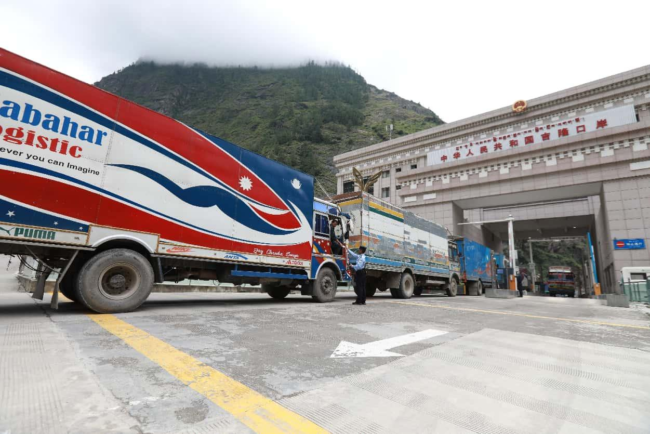
by News Desk
Bridging borders: Xizang’s Shigatse strengthens trade,ties with South Asia
By Xian Gan, Zhang Bolan from People’s Daily, Fan Lingzhi, Zhao Juecheng from Global Times Located in the southwestern part of Xizang autonomous region in southwest China, Shigatse sits at an average altitude of over 4,000 meters and is home to Qomolangma, also known as Mount […]
WorldBy Xian Gan, Zhang Bolan from People’s Daily, Fan Lingzhi, Zhao Juecheng from Global Times
Located in the southwestern part of Xizang autonomous region in southwest China, Shigatse sits at an average altitude of over 4,000 meters and is home to Qomolangma, also known as Mount Everest, the world’s highest peak.
Among Xizang’s six overland trade ports, five are located in Shigatse: Dram, Gyirong, Lektse, Zhentang, and Ri’og. These ports form critical land corridors connecting China with South Asia. With border residents coming and going and a steady stream of vehicles passing through, Shigatse presents a vibrant picture of bustling border trade.
In Dram township, Nyalam county, the Friendship Bridge marks the terminus of China’s National Highway 318, which links the largest number of provinces in the country. Each day around 10 am, the China-Nepal border gates open, and the bridge quickly comes alive with the flow of pedestrians and vehicles, a unique scene of cross-border movement and connection.
Spanning the Bhotekoshi River, the Friendship Bridge connects Dram with Tatopani village in Nepal’s Sindupalchowk.
Chhiring, a young man from Tatopani, is usually among the first to cross the border into China each day. His small shop near the Dram Port is packed with goods like sneakers, blankets, and bedding. “Chinese products are of good quality and affordable,” he explained as he enthusiastically introduced his merchandise to customers. Business has been steady thanks to the favorable trade environment at the port.
Located about 120 kilometers from Kathmandu, the capital of Nepal, Dram Port officially opened in 1966 and has since become the largest first-class land port in Xizang. At its peak, it handled over 80% of trade between China and Nepal.
Just outside the port, rows of brand-new cars lined the roadside, ready for export. Zeng Shuai, who works for an auto sales company, was busy processing customs paperwork. “Chinese new energy vehicles produced by MG and Dongfeng are very popular in Nepal,” he said.
Starting from Zhengzhou, central China’s Henan province, these new energy vehicles were transported by freight trains bound for South Asia. After being cleared in Shigatse, they were exported via Dram Port to Nepal. In recent years, Chinese-made new energy vehicles, lithium batteries, and photovoltaic products – well-matched to South Asian market demand – have become star performers. In 2024 alone, 11,000 new energy vehicles were exported through Shigatse’s Dram and Gyirong ports.
At Gyirong Port, the Rasog Bridge spans a border river. According to port officials, the bridge has evolved from a wooden suspension bridge to a steel-cable structure, and now to a modern highway bridge. For generations, the Rasog Bridge has borne witness to the growing trade between China and Nepal.
The Norling Restaurant in Gyirong township is a local favorite. It is run by Nepali entrepreneur Mingma Tsomo and her husband, who introduced authentic Nepali flavors to Gyirong 14 years ago. In 2019, Mingma Tsomo expanded her business by opening a clothing and specialty store in the township’s border trade market. “We make about 300,000 to 400,000 yuan ($41,705 to $55,607) a year,” she said.
“Border trade and people-to-people exchanges between neighboring regions with complementary resources foster mutual development,” said Yang Yabo, director of the South Asia research institute at the Academy of Social Sciences of Xizang.
On November 13, 2023, the Lektse-Naiqung Port officially opened. Situated at an altitude of 4,772 meters, Lektse Port is Xizang’s highest land port. It provides access to Pokhara, a major city in Nepal. With its opening, the China-South Asia trade corridor has become more efficient and accessible.
On both sides of the border, heavy trucks are a common sight. Their cabs and trailers are often decorated with care, some even display both Chinese and Nepali flags, and are painted with phrases like “China-Nepal Friendship” and “Brothers Forever.”
In Tatopani village, Nepali restaurant owner Lapa tends to his shop during the off-season. While waiting for customers, he often watches Chinese short dramas with English subtitles on his phone. “They’re really captivating,” he said. “Many of them are about family and work – real everyday life. It turns out we’re all quite similar.”
As cross-border interactions deepen, efficient and people-oriented services help bring both sides even closer.
In recent years, Shigatse has continued to expand its opening up to the outside world. The city now boasts 15 foreign exchange service outlets that support businesses with cross-border trade settlement, securities investment, overseas direct investment, and personal currency exchange. These services are available in 9 border counties as well as the Gyirong and Dram ports.
“Thoughtful service brings tangible results,” said Tsering Tsomo, deputy head of the general affairs section of Shigatse customs. “In the first quarter of this year, Shigatse’s total foreign trade reached 907 million yuan, a 22.2% year-on-year increase, with 574 million yuan attributed to trade with South Asian countries. Given the current momentum of exchanges and cooperation, we expect to set a new record this year.”
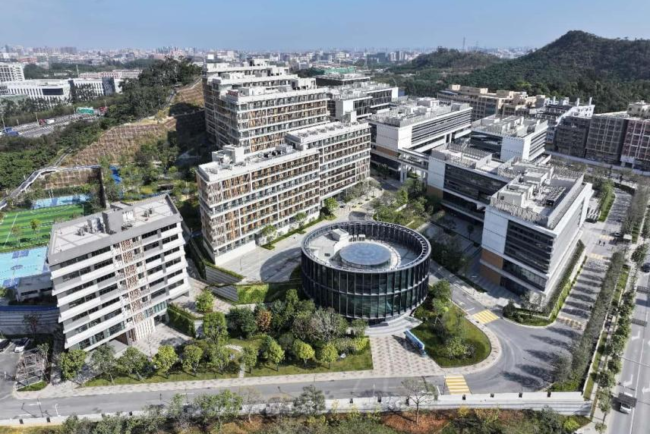
by News Desk
Guangdong-Hong Kong-Macao Greater Bay Area dynamic hub of collaborative innovation
By Fu Zimei, Jiang Lin, He Linping, Wang Yunna, People’s Daily Just how dexterous can a robotic “hand” be? In a robotics lab in Shenzhen, south China’s Guangdong province, a silver humanoid robot slowly extended its five fingers and delicately picked up a series of […]
WorldBy Fu Zimei, Jiang Lin, He Linping, Wang Yunna, People’s Daily
Just how dexterous can a robotic “hand” be?
In a robotics lab in Shenzhen, south China’s Guangdong province, a silver humanoid robot slowly extended its five fingers and delicately picked up a series of fragile items without popping a balloon, crushing a potato chip, or damaging a piece of tofu.
This remarkable dexterity is the product of years of fundamental research originally carried out in Hong Kong, now transformed into real-world applications in Shenzhen, said Duan Jianghua, founder and CEO of Daimon Robotics, a Shenzhen-based tech firm.
With its high level of openness and strong economic vitality, the Shenzhen-Hong Kong-Guangzhou science and technology cluster has ranked second globally for five consecutive years in the Global Innovation Index published by the World Intellectual Property Organization.
In recent years, Guangdong, Hong Kong, and Macao have joined forces to leverage their respective strengths, unleash collaborative synergies, and accelerate the development of a globally influential international innovation and technology hub.
In the increasingly competitive global landscape of science and technology, large-scale and organized research activities are becoming ever more important, with large scientific facilities that focus on cutting-edge exploration and foundational capabilities gaining prominence.
In the Guangdong-Hong Kong-Macao Greater Bay Area (GBA), two innovation corridors, Guangzhou-Shenzhen-Hong Kong and Guangzhou-Zhuhai-Macao, form a sprawling “Y”-shaped network. National-level scientific facilities such as the China Spallation Neutron Source, the Advanced Attosecond Laser Infrastructure, and the Research Facility of Cold-seep Ecosystems stand as critical “pillars” of innovation, while high-level research institutes like Pengcheng Laboratory and Guangzhou Laboratory have been successively established, enabling the region to achieve more breakthroughs from “zero to one.”
At the Institute of Collaborative Innovation of the University of Macau, a human-computer interaction experiment was underway. A participant wearing a headset viewed a sequence of images, with their emotional responses – like or dislike – displayed on the screen in fluctuating shades of green and gray.
The research team was focused on fundamental studies in “affective artificial intelligence.” “Thanks to a dedicated link to the National Supercomputing Center in Guangzhou and the powerful computing capabilities of supercomputer Tianhe-2, we’ve been able to tackle projects that were previously out of reach,” said Xu Chengzhong, interim director of the institute.
Just across a river in Hengqin, the Guangdong Institute of Intelligence Science and Technology has partnered with the University of Macau to establish the Joint Laboratory (Research Center) for Cognition and Brain Sciences.
“By sharing research resources, we are striving to achieve breakthroughs in core technologies,” said Zhang Xu, president of the Guangdong Institute of Intelligence Science and Technology.
Major original innovations in the GBA are the product of collaborative scientific efforts across Guangdong, Hong Kong, and Macao. So far, 34 Guangdong-Hong Kong-Macao joint laboratories have been established and are now in operation.
A series of landmark achievements underscore the area’s growing influence in science and technology: China’s first domestically developed deep-ocean drilling vessel Meng Xiang was officially commissioned in Nansha, Guangzhou; the Hong Kong University of Science and Technology led the development of a multi-functional lunar robot and mobile charging station; and the “Macao Science 1” satellite has orbited the Earth more than 10,000 times, generating a trove of high-precision scientific data. These breakthroughs are steadily pushing the GBA to new heights in technological innovation.
In the chip industry, one of the sectors where China has faced the toughest external restrictions, RISC-V pioneer Tan Zhangxi made a bold move. 7 years ago, he left California and brought his team to Qianhai, Shenzhen, where they founded RISC-V chip company RiVAI, aiming to develop high-performance server chips.
“The hardest part of chip development isn’t making a chip, but achieving sustainable iteration. The GBA offers an ideal environment for this,” Tan said.
In Hong Kong, RiVAI has established a subsidiary, working closely with research institutions, attracting talent, and engaging in international exchanges. “Guangdong has a robust electronics industry with many well-known end-user clients. Its integrated supply chains create a fast-paced ecosystem for technological iteration,” Tan explained.
“Innovation labs are connected to production lines” – this close integration between the innovation and industrial chains – is a key reason why many tech companies are drawn to the GBA.
Hong Kong and Macao offer advantages in international connectivity, global talent recruitment, funding access, and fundamental research. Meanwhile, the Chinese mainland provides complete industrial and supply chains, diverse application scenarios, and a concentration of skilled professionals – conditions that rapidly accelerate the transition from “1 to 100” in product development.
Spanning 56,000 square kilometers, this dynamic region not only supports faster innovation but also offers enterprises broad development opportunities.
Across the GBA, high-tech enterprises in fields like artificial intelligence, robotics, big data, low-altitude economy, autonomous driving, and biomedicine are a common sight. Home to 77,000 national-level high-tech enterprises, the region continues to unleash new drivers of high-quality productivity, propelling science and technology forward with ever-accelerating speed.

by News Desk
China transforms wisdom of harmonious coexistence into solutions for global governance
China transforms wisdom of harmonious coexistence into solutions for global governance By He Yin, People’s Daily June 10 marked the inaugural International Day for Dialogue among Civilizations of the United Nations. Dialogue and mutual learning are essential to the development of civilizations, and they serve as […]
World
China transforms wisdom of harmonious coexistence into solutions for global governance
By He Yin, People’s Daily
June 10 marked the inaugural International Day for Dialogue among Civilizations of the United Nations.
Dialogue and mutual learning are essential to the development of civilizations, and they serve as powerful drivers for global peace, progress, and sustainable development.
In today’s rapidly evolving world, the value of civilization exchange has never been more evident, and the importance of interaction among civilizations could not be more critical. The call for dialogue among civilizations could not be more timely.
To celebrate the International Day for Dialogue among Civilizations, a themed event was held on June 9 at the United Nations Headquarters in New York. At the event’s thematic dialogue session, participants from across the globe spoke highly of the Global Civilizations Initiative (GCI) proposed by China, recognizing its significance for the world and calling for enhanced solidarity, deeper dialogue, and collective efforts to safeguard peace and development.
In his speech, United Nations Secretary-General Antonio Guterres noted: “On this first International Day for Dialogue among Civilizations, we celebrate that conviction and the rich diversity of civilizations as a force to promote mutual understanding and global solidarity.”
Last year, with unanimous support from all member states, the 78th Session of the United Nations General Assembly adopted a resolution jointly proposed by China and 82 other countries, designating June 10 of each year as the International Day for Dialogue among Civilizations.
The resolution fully embodies the core message of the GCI and reflects the shared aspiration of people around the world to promote dialogue and advance human progress. It has received broad support from the international community.
Dialogue among civilizations strengthens the bonds of peace, fuels momentum for development, and builds bridges of friendship. In 2023, Chinese President Xi Jinping solemnly put forward the GCI, advocating the respect for the diversity of civilizations, the common values of humanity, the importance of inheritance and innovation of civilizations, as well as robust international people-to-people exchanges and cooperation.
Establishing the International Day for Dialogue among Civilizations is a concrete step of China toward implementing the GCI, a vivid demonstration of how China is transforming its time-honored philosophy of harmony in diversity into practical solutions for global governance. Over the past year, China has worked closely with other countries to implement the spirit of the resolution, creating platforms for equal dialogue among different civilizations.
From the Inter-Civilizational Dialogue among Shanghai Cooperation Organization (SCO) Countries 2024 and the BRICS Civilization Dialogue, to the 2024 Forum on Dialogue between the Civilizations of China and Latin America and the Caribbean and the 4th Conference on Dialogue Between Chinese and African Civilizations, China has remained a steadfast promoter of mutual learning among civilizations and a driver of the GCI’s implementation. The international community widely recognizes China’s growing leadership in advocating equal dialogue among civilizations.
Through mutual learning and exchanges, the world can draw from diverse civilizational experiences to address pressing global challenges and expand pathways toward modernization. Chinese modernization, deeply rooted in the country’s rich traditional culture, represents both a continuation of China’s own civilization and a fusion of achievements from other world civilizations.
China supports all countries in exploring modernization paths suited to their national conditions. By convening forums such as the SCO Political Parties Forum, building China-Africa platform for governance experience sharing, and launching the Global South Think Tanks Alliance, China is actively promoting mutual learning in governance and civilizational exchange.
All countries are on board the same giant vessel. It carries not only aspirations for peace, economic prosperity and technological advancement, but also the diversity of civilizations and the continuation of humanity.
China is committed to collaborating with all stakeholders to advance the GCI’s principles, uphold equality among civilizations, promote exchanges among civilizations, and advance the progress of civilizations. It will let dialogues play a harmonious symphony and raise the sails on the voyage, and help steer the profound changes unseen in a century toward a direction that better promotes human progress.

by News Desk
China-U.S. economic, trade relations complementary, mutually beneficial
By Zhong Sheng, People’s Daily The first meeting of the China-U.S. economic and trade consultation mechanism is currently taking place in London, providing an important new opportunity for both sides to resolve differences through equal dialogue and consultation. People from different walks of life in […]
World
By Zhong Sheng, People’s Daily
The first meeting of the China-U.S. economic and trade consultation mechanism is currently taking place in London, providing an important new opportunity for both sides to resolve differences through equal dialogue and consultation.
People from different walks of life in China and the U.S. as well as the international community expect the two countries to implement the consensus reached by the two heads of state during their recent phone call, so as to inject more certainty and stability into their respective development and the world economic recovery.
Promoting dialogue and consultation requires a rational and objective understanding of China-U.S. economic and trade relations. Over the past decades, China and the U.S. have formed a complementary and mutually beneficial economic and trade structure. The sound development of bilateral economic and trade relations has not only delivered tangible benefits to the peoples of both countries, but also made important contributions to world economic growth.
An objective analysis of data reveals that gains from economic and trade relations between China and the U.S. are generally balanced. The trade balance in goods between China and the U.S. is both an inevitable result of the structural issues in the U.S. economy and a consequence of the comparative advantages and international division of labor between the two countries.
In service trade and multinational operations, the U.S. enjoys a notable advantage. In 2024, the U.S. registered a surplus of $27.3 billion in service trade with China. In 2022, the sales revenue of the U.S.-owned enterprises in China reached $490.5 billion, significantly exceeding the $78.6 billion in sales revenue generated by Chinese-owned enterprises in the U.S. – a gap of over $400 billion. When the three factors of trade in goods, trade in services, and the local sales of domestic enterprises’ branches in the other country are taken into full account, it becomes evident that neither side is at a disadvantage, nor is one exploiting the other in the bilateral economic and trade relationship.
Meanwhile, a significant portion of Chinese exports to the U.S. includes value generated through global value chains. However, current trade statistics methods calculate China’s exports based on their gross value (the full value of goods exported by China to the U.S.). Calculated by the trade in value-added method, the U.S. trade deficit with China would substantially decrease.
China does not deliberately pursue a trade surplus. As a matter of fact, the ratio of China’s current account surplus to GDP has decreased from 9.9 percent in 2007 to 2.2 percent in 2024. In recent years, China’s share of the total U.S. deficit of trade in goods has fallen from 47.5 percent in 2018 to 24.6 percent in 2024, while the U.S. trade deficit with other countries and regions has increased substantially in the same period. In 2024, the U.S. international deficit of trade in goods reached $1.2 trillion. This once again proves that the root cause of the U.S. goods trade deficit lies in its own economic structure.
The potential for U.S. exports to China remains untapped, largely due to U.S. domestic policies. The U.S. holds a comparative advantage in high-tech industries, yet in recent years it has overstretched the concept of national security and politicized economic and trade issues. Following the China-U.S. economic and trade talks in Geneva, the U.S. introduced multiple discriminatory restrictive measures against China. These measures included issuing guidance on AI chip export controls and halting sales of chip design software to China.
These persistent restrictive measures have caused U.S. businesses to miss valuable opportunities in the Chinese market. Time and again, it has been shown that “high fences and small yards” and decoupling and supply chains disruption run counter to economic principles and hinder normal business interactions between the two countries.
China remains committed to pursuing high-level opening-up and import expansion, providing more opportunities to countries around the world, including the United States. China continues to use the major platforms such as the China International Import Expo, the Canton Fair, the China International Fair for Trade in Services, and the China International Consumer Products Expo to boost imports. It also develops national-level demonstration zones for the creative promotion of imports, steadily facilitates growth in imports, and explores more potential. The goal is to transform China’s vast market into a shared global market, injecting new impetus into the world economy.
The China-U.S. economic and trade relationship is fundamentally rooted in complementarity and mutual benefits. The steady and sound development of bilateral ties hinges on dismantling man-made barriers and facilitating unimpeded, reciprocal flows in trade and economic cooperation. As the world’s two largest economies, China and the U.S. can not only advance their own development through strengthened economic and trade cooperation but also play an essential role in ensuring the stability of global industrial and supply chains.
It is believed that China and the U.S. can find mutually beneficial and win-win solutions through equal dialogue and practical cooperation. It is hoped that both sides will work together to foster an enabling environment for enterprises to conduct normal business activities, thereby delivering greater benefits to the peoples of both nations and contributing more to world economic recovery and growth.
(Zhong Sheng is a pen name often used by People’s Daily to express its views on foreign policy and international affairs.)

by News Desk
High-quality supply winning hearts of Chinese consumers
By Han Chunyao, People’s Daily From multilingual smart home ecosystems to AI-powered thermal-regulating down jackets and robotic exoskeletons that make climbing easier – China’s consumer market is undergoing a wave of positive transformation. A growing preference for personalized, high-quality, and experience-driven consumption is becoming pronounced. […]
Business WorldBy Han Chunyao, People’s Daily
From multilingual smart home ecosystems to AI-powered thermal-regulating down jackets and robotic exoskeletons that make climbing easier – China’s consumer market is undergoing a wave of positive transformation.
A growing preference for personalized, high-quality, and experience-driven consumption is becoming pronounced. In 2024 alone, over 21 million types of new consumer products were launched across the country, with many high-quality offerings becoming the new favorites of discerning shoppers.
But what constitutes “high-quality supply” in today’s China? It could be an exhilarating concert, an immersive countryside retreat, or a hands-free robotic vacuum cleaner.
Far from being confined to luxury, high-quality supply refers to products and services that resonate deeply with consumers, align with smart, green, and healthy development, improve quality of life, and enhance overall wellbeing.
Fueling this shift is a robust and increasingly sophisticated supply system. China is now home to more than 180,000 consumer goods enterprises above the designated size, or those with annual main business revenue of over 20 million yuan ($2.79 million), which account for 38 percent of all industrial enterprises nationwide.
Much of this momentum originates in laboratories. Take a triple-drum washing machine developed by Chinese home appliance manufacturer Haier for example, which resembles the face of Mickey Mouse and allows separate washing for socks, underwear, and outerwear. Users have lauded the machine as evidence that the company “listens to consumers,” turning an everyday pain point into a touchpoint of satisfaction.
Behind this responsiveness lie technological breakthroughs such as triple-drum independent drive systems and AI-based fabric recognition, demonstrating how technological ingenuity is now being steered by market insight.
China is the world’s largest source of home appliance technology, accounting for 67.34 percent of global patent applications in the sector. In new energy vehicles (NEVs), China leads the world in core technologies related to batteries, motors, and electronic control systems. Innovations developed in laboratories are rapidly transforming into smart products for everyday life, continuously enhancing the quality of life for millions of households.
This transformation is not limited to products alone. Digitalization is remaking the industrial process. In a leading Chinese automaker’s factory, an NEV rolls off the production line every minute – a testament to the remarkable speed and efficiency enabled by automated assembly lines. Such seamless production would be impossible without the highly collaborative and digitally integrated NEV industrial chain.
New digital models such as networked collaboration and personalized customization are emerging rapidly. AI now assists research and design engineers, while reverse customization brings high-end bespoke services to consumers. Currently, over 80 percent of light industry enterprises use digital design tools, and nearly half have achieved networked collaboration.
Thanks to 5G and industrial Internet technologies, flexible manufacturing, smart inventory management, and collaborative design are being rapidly adopted across industries such as automobiles, home appliances, and fashion.
High-quality supply is further reinforced by more thoughtful service experiences. At grocery chain store Pangdonglai, services like free trouser hemming, power banks, and pet-sitting have elevated routine shopping into an engaging and enjoyable experience. Consumers refer to the chain, often half-jokingly, as a “5A-rated tourist attraction.” The 84 warm service details provided by the chain contribute significantly to enhancing customer satisfaction and infusing joy into the shopping experience.
Meanwhile, in e-commerce, faster deliveries and broader free-shipping zones are becoming standard expectations. Today, superior services are becoming an integral part of superior products, helping businesses forge stronger emotional connections with consumers.
Cultural innovation is also adding momentum. When contemporary toy brand POP MART partnered with Chinese painter Chang Shana to produce Dunhuang-themed collectible blind boxes, ancient culture met pop aesthetics, quickly turning the product into a sought-after item.
Similar collaborations are on the rise in China: New-style tea brands are partnering with popular animation IPs, while immersive dance performances inspired by Tang Dynasty (618-907) court life now light up urban commercial centers. As consumption continues to upgrade, the integration of diverse business models is expanding the boundaries of high-quality supply and creating an ever-growing array of delightful new products and experiences for consumers.
The shift from quantity to quality is not only diversifying China’s consumer landscape – it is also propelling the collective rise of Chinese brands. Once associated with labels such as “low-end” or “low-cost original equipment manufacturer (OEM),” Chinese firms are now climbing into the high-value segments of the global value chain.
As effective demand and high-quality supply continue to reinforce one another in a virtuous cycle, Chinese manufacturing is increasingly seizing the opportunities presented by consumption upgrading, responding to people’s growing aspirations for a better life and creating infinite possibilities for future development.

by News Desk
Desert transformation: county in Xinjiang finds prosperity in sands
By Jiang Yunlong, People’s Daily “As a child, my dream was to escape Makit and distance myself from the Taklimakan Desert,” recalled Reyhan Ehmet. Born in 2001 in Makit county, Kashgar prefecture in northwest China’s Xinjiang Uygur autonomous region, Reyhan remembers a childhood dominated by sandy landscapes. “Spring […]
Culture WorldBy Jiang Yunlong, People’s Daily
“As a child, my dream was to escape Makit and distance myself from the Taklimakan Desert,” recalled Reyhan Ehmet.
Born in 2001 in Makit county, Kashgar prefecture in northwest China’s Xinjiang Uygur autonomous region, Reyhan remembers a childhood dominated by sandy landscapes. “Spring rarely brought greenery—instead, everything indoors and outdoors was shrouded in a yellow haze, with the acrid taste of sand lingering in the air,” she added.
Makit county, surrounded by the Taklimakan Desert on three sides, spans an area where 90% of its land is desert.
After graduating from university, Reyhan worked in Ningbo, east China’s Zhejiang province. In February 2024, she returned to her hometown and was stunned by its transformation, prompting her to settle there permanently.
“Coming back, I now realize that we can manage, develop, and make good use of the Taklimakan Desert,” she said.
Along the road from the county seat into the desert, a vast greenbelt of thriving trees extends for dozens of kilometers. This constitutes part of a 3,046-kilometer sand-blocking barrier encircling the Taklimakan, which Makit county has cultivated as its primary ecological defense system.
Since 2012, over 3 million residents have participated in Makit’s desertification control initiatives, resulting in the creation of 1.176 million mu (approximately 78,400 hectares) of desert reclamation projects, including 460,000 mu of shelterbelt forests. To date, more than 260 million trees have been planted, including diversiform-leaved poplars, Xanthoceras sorbifolium, Euphrates poplars, Russian olives, tamarisks, and saxauls.
“The Taklimakan Desert I see today is unrecognizable from the desert of my childhood,” Reyhan said. The shift extends beyond environmental recovery to a broader cultural shift in how locals perceive development, prioritizing sustainability over exploitation.
“Many tourists from outside want to experience the desert up close,” said Wang Jiangpeng, deputy director of the Makit county bureau of culture, sports, radio, television and tourism. While some visitors did come in the past, inadequate tourism facilities meant most only snapped photos at the desert’s edge before leaving. In recent years, however, the county has revitalized its infrastructure and visitor services thanks to strong support from local governments, enterprises, and community stakeholders. This has boosted both its reputation and capacity to accommodate growing numbers of tourists.
“Last year alone, we received 400,000 tourists, and we anticipate surpassing 500,000 this year. Desert tourism is becoming a key driver of the county’s economic growth,” said Wang.
Encouraged by the boom in desert tourism, Reyhan decided to stay in Makit and joined a tourism development company. She now leads tourists on in-depth desert excursions deep into the Taklimakan.
Though she grew up on the desert’s fringes, Reyhan never imagined it could evolve into such a lively destination.
During peak season, most tourists arrive around sunset. After trying out desert off-road driving and other activities, they return to the campsite to enjoy local song and dance performances and experience traditional flatbread-making. By night, they gaze at the desert’s star-strewn sky, and at dawn, they climb towering dunes to witness the sunrise.
Even in the off-season, the camp is far from quiet. Tender green branches sprout from desert poplars, and Reyhan has “hosted” visits from curious jerboas and fluffy little foxes. One time, a colleague excitedly told her that a rare yellow sheep had appeared near the campsite.
The desert tourism area sits next to a populus euphratica forest park and the Tangwang Lake National Wetland Park in Makit.
“Tourism development must not compromise the desert’s ecosystem, so we incorporated protective measures from the very beginning,” Reyhan said. Alongside expending water, electricity, and internet infrastructure to the campsite, they also built nearby facilities for wastewater treatment and waste management facilities to ensure no waste is left in the desert.
Grabbing a handful of fine sand, she let it fall onto her pants, then gave them a shake – the sand was so clean that her pants were spotless again. “The sand here is very clean, and we must take good care of it,” Reyhan said.
“For Makit, desert tourism brings jobs and increases incomes. By balancing desert conservation, ecological restoration, and sustainable development, we’ve forged a model that harmonizes environmental protection with economic progress,” said Wang Faqiang, deputy head of Makit county.
“Desert tourism is a rich resource. As China’s largest desert, the Taklimakan is expected to draw more and more visitors through the integrated model of ‘desert control + industry + employment + tourism,'” Wang Faqiang added.
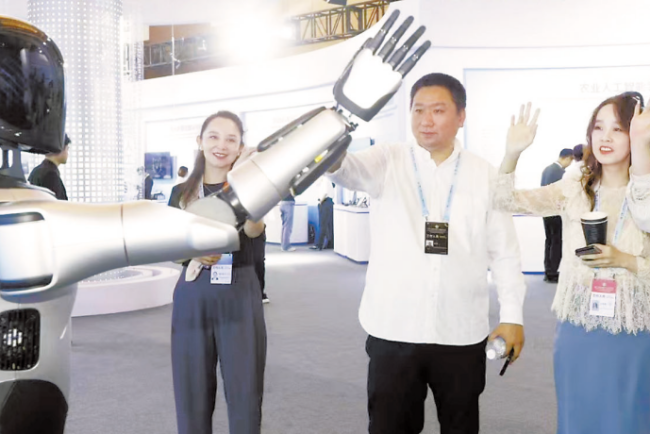
by News Desk
China-SCO AI forum charts path toward inclusive digital development
By He Yin, People’s Daily Themed “Intelligence Converges in China, Wisdom Benefits SCO,” the China-SCO AI Cooperation Forum was held in north China’s Tianjin recently. The event aimed to strengthen cooperation between China and SCO member states in technological research, talent development, and industrial applications. […]
Tec WorldBy He Yin, People’s Daily
Themed “Intelligence Converges in China, Wisdom Benefits SCO,” the China-SCO AI Cooperation Forum was held in north China’s Tianjin recently.
The event aimed to strengthen cooperation between China and SCO member states in technological research, talent development, and industrial applications. It encouraged joint efforts to tackle key technological challenges, accelerate the industrialization of AI technologies, and share the benefits of AI development, so as to inject fresh momentum into regional prosperity and development.
Advancing economic transformation through AI aligns with the shared aspirations of SCO countries. China has actively embraced the wave of intelligent transformation, vigorously promoting innovation in AI science and technology, fostering industrial growth, and accelerating the integration of AI across a wide range of sectors.
At the same time, it has worked to establish a sound regulatory framework and has built a relatively complete AI industrial ecosystem.
As of April 2025, China’s AI patent applications had surpassed 1.5 million in number, accounting for nearly 40 percent of the global total, ranking first worldwide.
The AI-driven large models developed by Chinese companies – characterized by open-source access, cost-effectiveness, and high efficiency – are offering SCO countries new paradigms and perspectives for advancing their own AI capabilities.
Experts from SCO member states noted that China has demonstrated strong innovation capacity and enormous growth potential by applying AI broadly in both commercial and scientific fields, while also cultivating a large pool of highly skilled professionals.
As the world’s largest and most populous regional organization, the SCO holds extensive data resources and diverse application scenarios. Enhanced AI cooperation presents new development opportunities among member states.
China has joined hands with fellow SCO countries to address key technological challenges, foster continuous innovation in AI, expand the scope of real-world applications, and steadily unlock the benefits of intelligence.
Concrete examples of such cooperation are already visible. At a photovoltaic power facility in Samarkand, Uzbekistan, a Chinese enterprise has introduced intelligent cleaning robots to safeguard solar panels around the clock, significantly improving their efficiency and longevity. In the wheat-growing regions of Punjab, Pakistan, a China-Pakistan smart agricultural project now enables local farmers to precisely manage irrigation and fertilization through smartphone-based systems.
At the forum, China proposed a four-point plan to enhance policy coordination, expand technological cooperation, promote application empowerment, and strengthen AI security governance. It also released a plan to build an AI application center and extended an open invitation for joint participation, underscoring its commitment to openness, multilateral cooperation, and shared scientific and technological advancement.
China is a strong advocate for the fair and inclusive development of AI on a global scale and a strong proponent, facilitator, and pioneer in strengthening international cooperation on AI capacity building.
In 2024, the 78th UN General Assembly adopted a China-led resolution on enhancing international AI cooperation. China also launched the AI Capacity-Building Action Plan for Good and for Al and initiated the Group of Friends for International Cooperation on AI Capacity-Building. These efforts are aimed at fostering broad partnerships so as to make sure that the benefits of digital transformation are enjoyed by all, and that no country and no one is left behind.
Recently, the second AI Capacity Building Workshop was held in Beijing, drawing participants from nearly 40 countries and international organizations, including multiple SCO member states.
The fair and inclusive development of AI can illuminate the path of technological progress and contribute to a brighter future for humanity. Guided by the Shanghai Spirit, China will continue to work together with other SCO member states to deepen exchanges and cooperation, share the dividends of AI, and ensure that the benefits of AI better serve global development.
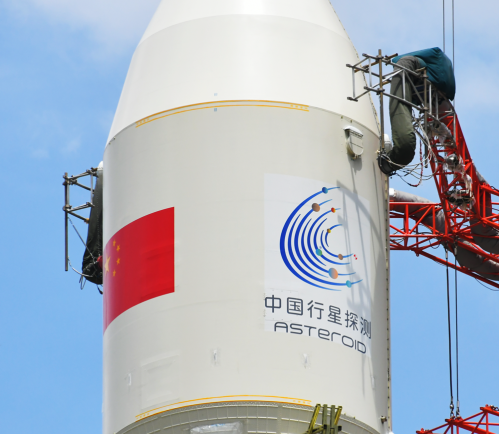
by News Desk
China launches Tianwen-2 for asteroid sampling
By Yu Sinan, Li Yi, Zhang Wei In the early hours of May 29, China successfully launched its first asteroid sample-return mission, Tianwen-2, from the Xichang Satellite Launch Center in southwest China’s Sichuan province, an endeavor designed to shed light on the formation and evolution of […]
Tec WorldBy Yu Sinan, Li Yi, Zhang Wei
In the early hours of May 29, China successfully launched its first asteroid sample-return mission, Tianwen-2, from the Xichang Satellite Launch Center in southwest China’s Sichuan province, an endeavor designed to shed light on the formation and evolution of asteroids and the early solar system.
The Tianwen-2 mission aims to achieve multiple goals over a decade-long expedition: collecting samples from the near-Earth asteroid 2016HO3 and exploring the main-belt comet 311P, which is more distant than Mars.
The mission includes 13 flight stages and will reach a distance of approximately 150 million to 500 million kilometers from Earth, marking a major step forward in China’s deep space exploration endeavors.
Known as a quasi-satellite of Earth, the asteroid 2016HO3 orbits the Sun and appears to circle around Earth as well, remaining a constant companion to our planet. Its relatively stable orbit requires lower energy requirements for spacecraft to reach it, while enabling a viable scenario for subsequent exploration of the main-belt comet 311P.
Scientific research suggests that the asteroid 2016HO3 may preserve primitive materials from the early solar system. Investigating this asteroid could yield valuable insights into the composition, formation, and evolutionary history of the solar system’s early materials.
The second target, 311P, a celestial anomaly discovered in the main asteroid belt between Mars and Jupiter, occasionally spews out materials and resembles a comet with tails. While it exhibits compositional traits with traditional comets, it maintains the orbital characteristics of an asteroid. Exploring this unique object will deepen human understanding of the composition, structure, and evolutionary mechanisms of small celestial bodies.
Tianwen-1 marked China’s first Mars exploration mission, successfully achieving orbiting, landing, and roving operations in a single mission. Tianwen-2, however, has a different set of objectives and faces new technical challenges.
First, the Tianwen-2 mission will conduct sampling under weak gravity conditions. Observational data suggest that the asteroid 2016HO3, with an average diameter of about 41 meters, exists in near-zero gravity and rotates rapidly. Given these complex conditions, it is extremely challenging for the probe to achieve stable attachment with the asteroid and sampling within a limited time.
Second, the mission involves vast distances. Asteroid 2016HO3 is located about 18 million to 46 million kilometers from Earth, while the main-belt comet 311P lies approximately 150 million to 500 million kilometers away. The immense distance from Earth imposes stringent requirements on the probe’s communication system, trajectory design, power management, and the capability to maintain highly reliable long-term operational performance.
Furthermore, there is uncertainty regarding the exploration target. Current observations of the asteroid 2016HO3 provide limited information on its rotational behavior and surface characteristics, which significantly complicate the design of both the spacecraft and its sampling methods.
Tianwen-2 is equipped with 11 scientific instruments, including cameras, a visible and infrared imaging spectrometer, a thermal emission spectrometer, and a detection radar, all designed to facilitate scientific data collection during the mission.
In previous missions sending payloads into the Earth’s orbit, a rocket is required to achieve a separation velocity equal to the first cosmic velocity, or approximately 7.9 kilometers per second.
However, this mission requires a separation speed exceeding 11.2 kilometers per second, known as the second cosmic velocity, to escape the Earth’s gravitational influence, necessitating high speed and energy.
After evaluating the rocket’s payload capacity, performance capability, and reliability, Long March-3B was chosen as the dedicated vehicle for the Tianwen-2 mission.
As the primary launch vehicle for China’s high-orbit launches, the Long March-3B has completed 108 missions, including key lunar missions such as Chang’e-3 and Chang’e-4.
Experts noted that asteroids are characterized by their small size, low mass, and weak gravity, making them challenging to capture and requiring exceptional precision in the rocket’s trajectory. During this launch, the rocket reached a speed of 11.2 kilometers per second, with a permitted speed deviation of no more than one meter per second, which could otherwise lead to a positional error of up to one million kilometers.
“Achieving such trajectory precision is akin to shooting a basketball from Shanghai to hit a hoop in Beijing, while ensuring the ball’s angle and speed upon entering the hoop are correct,” said Wei Yuanming, an expert with China Aerospace Science and Technology Corporation.
To tackle this challenge, the rocket design team spent two years completing multiple design iterations so as to achieve seamless “handoff” between the rocket and the probe, Wei added.

by News Desk
IOMed advances international rule of law through innovation, improves global governance
By He Yin, People’s Daily On May 30, the signing ceremony of the Convention on the Establishment of the International Organization for Mediation (IOMed) was held in Hong Kong. High-level representatives from 85 countries across Asia, Africa, Latin America, and Europe, and nearly 20 international […]
Blog World
By He Yin, People’s Daily
On May 30, the signing ceremony of the Convention on the Establishment of the International Organization for Mediation (IOMed) was held in Hong Kong. High-level representatives from 85 countries across Asia, Africa, Latin America, and Europe, and nearly 20 international organizations attended the event. Among them, 33 countries signed the convention on-site, making them the founding members of the IOMed.
The establishment of the IOMed marks an innovative step in international rule of law and a major initiative by the Global South to jointly promote global governance reforms and improvements. It has great significance in the history of international relations and fully demonstrates China’s commitment to contributing wisdom and solutions to global development and progress.
The establishment of the IOMed is an actualization of the purposes and principles of the UN Charter. It serves as an important public good in the field of the rule of law for better global governance.
Mediation, as is clearly stated in Article 33 of the UN Charter, is one of the first means that should be tried in seeking peaceful solutions to international disputes. However, prior to the IOMed’s creation, no dedicated intergovernmental legal organization existed to address international disputes through mediation.
The IOMed fills this institutional gap by mediating in disputes between states, between states and investors in other countries, and international commercial disputes at the will of all parties. This represents a significant advancement in the development of the international rule of law.
Drawing upon the strengths of major legal systems, the IOMed respects the autonomy of the parties concerned and offers advantages of being more flexible, cost-effective, convenient, and efficient. It complements and forms synergies with litigation, arbitration, and other existing international dispute settlement mechanisms, thereby enhancing their overall effectiveness.
As the world is entering a new period of turbulence and transformation, the global demand for timely and effective conflict resolution and the need to safeguard long-term cooperative relations is growing stronger.
The proposal to establish the IOMed has received broad international support and active response, reflecting China’s consistent commitment to promoting peace and resolving conflicts on the international stage.
From facilitating the reconciliation between Saudi Arabia and Iran in Beijing, to promoting intra-Palestinian reconciliation talks and the signing of the Beijing Declaration on Ending Division and Strengthening Palestinian National Unity, and to playing a constructive role in promoting the political settlement of the Ukraine crisis, the Palestinian-Israeli conflict, and issues related to the Korean Peninsula and Myanmar, China has long maintained that differences should be handled in the spirit of mutual understanding and accommodation. It advocates building consensus through dialogue and consultation, promoting development through win-win cooperation, and solving problems with a vision for the future, offering Chinese wisdom for countries seeking peaceful solutions to conflicts and differences.
The principles of resolving disputes through dialogue and mediating differences are universally embraced across civilizations. Chinese civilization, deeply rooted in the value of harmony, has long advocated peaceful coexistence. Its legal tradition values reconciliation and the non-violent conflict resolution, which aligns closely with the principles of modern international law for the peaceful settlement of disputes.
The IOMed does not impose binding rulings but instead provides an impartial platform for voluntary negotiation among parties. It upholds the principles of voluntary participation, equal consultation, and mutual benefit, respects the legitimate concerns of all parties, and strives for win-win outcomes, vividly illustrating the wisdom of harmony and peaceful coexistence.
In the long run, the birth of the IOMed can help transcend the “you-lose-I-win” zero-sum mentality, promote the amicable resolution of international disputes, and foster more harmonious international relations.
The IOMed is a legal public good for improving global governance contributed by countries of the Global South. It will make a significant contribution to upholding international equity and justice.
As the trend toward a multipolar world and greater democracy in international relations gathers momentum, the Global South has transformed from a “silent majority” in international politics to an important force in maintaining peace, driving development, and improving global governance.
Countries from the Global South have actively supported and participated in the establishment of the IOMed, widely recognizing it as consistent with the purposes and principles of the UN Charter and reflective of the values of respect, mutual trust, fairness, and harmony. The IOMed is broadly viewed as an effective measure for strengthening multilateralism.
Looking ahead, the organization will uphold the true spirit of the rule of law, strike a balance between procedural justice and substantive justice, expand the participation of developing countries, and steer international dispute settlement mechanisms toward greater equity and inclusiveness, thereby increasing the representation and voice of the Global South in global governance.
The preamble to the UN Charter solemnly states the commitment “to practice tolerance and live together in peace with one another as good neighbors, and to unite our strength to maintain international peace and security.” This aspiration captures the common vision of the international community.
Looking to the future, as long as all parties make good use of mediation and approach disputes with mutual understanding, they can turn conflict into cooperation, replace confrontation with dialogue, and move forward on the path toward building a community with a shared future for mankind.



